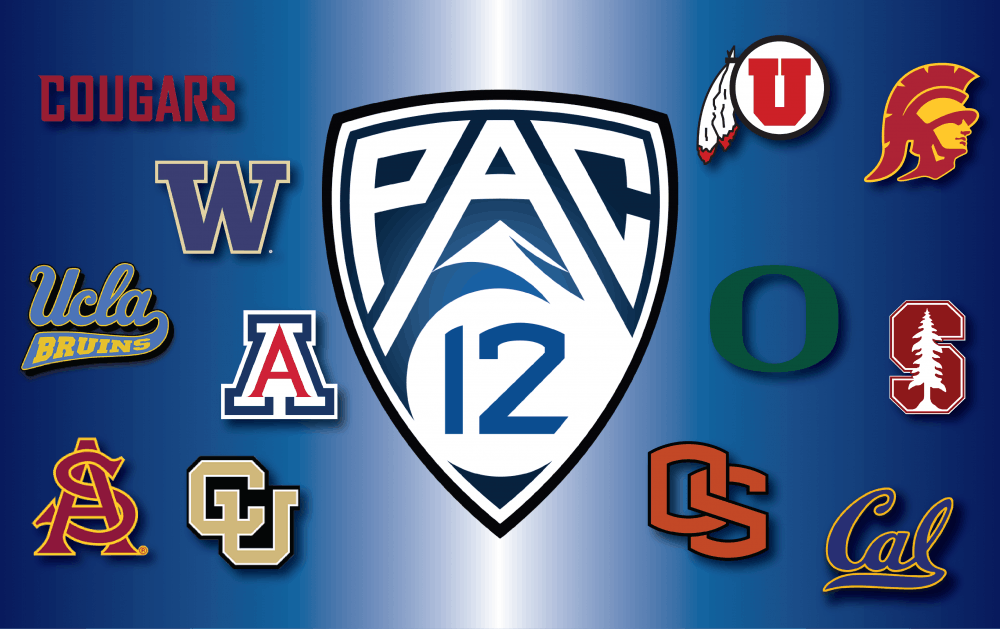
The Pac-12 Conference has long been a powerhouse in American collegiate sports, widely celebrated for its excellence in athletics and academic rigor. Founded in 1915 and originally known as the Pacific Coast Conference, the Pac-12 has evolved through the decades, adapting to changes in college sports while maintaining its reputation as one of the “Power Five” conferences in the United States. This article will take an in-depth look at the history, significance, recent transformations, and future of the Pac12, which holds a unique place in the collegiate athletic landscape.
A Brief History of the Pac-12
The roots of the Pac-12 trace back to the formation of the Pacific Coast Conference (PCC) in 1915. Originally consisting of only four schools—Washington, Oregon, California, and Oregon Agricultural College (now Oregon State)—the conference aimed to create a structure for intercollegiate sports on the West Coast. Over time, the conference expanded and rebranded multiple times, eventually becoming the Pac-8, then the Pac-10, and finally the Pac-12 in 2011 when Utah and Colorado joined.
Key Moments in Pac-12 Evolution
- Expansion to the Pac-10: In 1978, Arizona and Arizona State joined the conference, transforming the Pac-8 into the Pac-10. This marked a period of growth, enhancing the conference’s visibility and competition level.
- Formation of the Pac-12: The addition of the University of Colorado and the University of Utah in 2011 expanded the conference to its current 12-team lineup, positioning it as a dominant force in college sports across a wider geographic region.
- Pac-12 Championships: Over the years, Pac-12 teams have consistently performed at high levels in NCAA tournaments across sports, from football to basketball, to Olympic sports, establishing it as a well-rounded conference with strength in various athletic domains.
Structure of the Pac-12 Conference
The Pac-12 comprises twelve universities, spanning across six states: Arizona, California, Colorado, Oregon, Utah, and Washington. Each institution has carved out a distinct reputation not only in sports but also in academics, contributing to the conference’s unique identity. The universities include:
- Arizona State University
- University of Arizona
- University of California, Berkeley
- University of California, Los Angeles (UCLA)
- University of Colorado
- University of Oregon
- Oregon State University
- Stanford University
- University of Southern California (USC)
- University of Utah
- University of Washington
- Washington State University
The Pac-12 is structured to accommodate a wide array of sports, making it unique in supporting Olympic and lesser-known sports, such as gymnastics and water polo, in addition to popular sports like football and basketball. This emphasis on diversity in sports aligns with the conference’s mission to promote broad-based athleticism.
The Pac-12 Network: Broadcasting and Digital Reach
One of the Pac-12’s standout achievements was launching the Pac-12 Network in 2012. Aimed at providing exclusive access to conference sports, the network delivers extensive coverage of all athletic events, from major sports like football to niche sports. The Pac-12 Network is significant for:
- Revenue Generation: The network created additional revenue streams for the conference, supporting its member schools financially.
- Enhanced Visibility: By making all games accessible to a national audience, the network elevated the profile of Pac-12 sports and athletes, leading to increased fan engagement and recruitment potential.
- Digital Integration: The network also expanded into digital platforms, providing live streaming options and social media engagement for fans unable to access cable or satellite television.
Academic Excellence and Athletic Achievements
The Pac-12 prides itself on being more than just a sports conference; it promotes academic and athletic balance. Many Pac-12 schools are renowned for rigorous academic standards, including Stanford, UCLA, and UC Berkeley, which are consistently ranked among the top public and private universities in the U.S.
Noteworthy Athletic Achievements
Pac-12 teams have dominated numerous sports over the years, particularly in swimming, track and field, and volleyball. In addition to team sports, individual athletes from the Pac-12 have achieved national recognition and Olympic success, furthering the conference’s prestige. Some highlights include:
- Football: The Pac-12 has produced numerous national championship-winning football teams, including USC and Washington.
- Basketball: Known for both men’s and women’s basketball programs, schools like UCLA and Arizona have contributed to the conference’s status as a contender in March Madness.
- Olympic Sports: Many Pac-12 athletes have gone on to become Olympians, with swimming, track, and gymnastics being some of the most successful sports.
Challenges and Controversies
In recent years, the Pac-12 has faced challenges, particularly in the realms of revenue, television deals, and athlete compensation. These issues have impacted its standing relative to other Power Five conferences.
- Revenue Disparities: The Pac-12 has struggled to keep up with conferences like the SEC and Big Ten in terms of revenue generation. This disparity affects everything from facilities to recruitment capabilities.
- Criticisms of Pac-12 Network: While groundbreaking at the time, the Pac-12 Network has faced criticisms, particularly due to distribution limitations that made it hard for fans outside the West Coast to access content.
- Debates on Athlete Compensation: Like other conferences, the Pac-12 has been impacted by the NCAA’s changing stance on athlete compensation. Navigating the complexities of Name, Image, and Likeness (NIL) rights for athletes has posed challenges, as has the recent surge in conference realignment.
The Impact of Conference Realignment on the Pac-12
In the past few years, college sports have seen a significant wave of conference realignment, with some conferences expanding while others experience shake-ups. The Pac-12 has been impacted as well, with rumors and speculations regarding potential mergers and even teams leaving for other conferences.
Pac-12’s Response to Realignment
To stay competitive, the Pac-12 has been exploring options, such as potential expansion, alliance formation, and re-negotiating broadcasting deals. These efforts aim to ensure the conference’s sustainability and relevance amid an evolving landscape where college athletics are becoming increasingly commercialized.
Future of the Pac-12: What’s Next?
As it stands, the Pac-12 is at a crossroads, with its future hinging on how it adapts to changes within college sports. To maintain its position, the Pac-12 may need to prioritize several areas:
- Strengthening Broadcasting Agreements: The conference could enhance its reach and financial stability by forging partnerships with larger media companies to complement or restructure the Pac-12 Network.
- Expansion Possibilities: To solidify its place among the Power Five, the Pac12 may consider adding more schools, particularly from emerging markets.
- Enhanced Athlete Compensation Structures: The evolving NIL landscape will likely see the Pac-12 adapt its policies to better support its athletes, especially in high-revenue sports.
- Investing in Digital Engagement: Expanding its online presence through social media, live streaming, and interactive fan engagement could help the Pac-12 attract younger audiences and maintain relevance.
Conclusion
The Pac-12 Conference has a storied history and holds a prominent place in American college sports. Known for its athletic prowess, academic excellence, and innovation, the conference has contributed significantly to the collegiate sports scene in the U.S. and around the world. However, with ongoing challenges in revenue, conference alignment, and athlete compensation, the Pac-12 faces an uncertain future. By focusing on strategic partnerships, potential expansion, and enhanced athlete support, the Pac-12 can adapt and continue to thrive in a rapidly changing landscape, preserving its legacy and impact for generations to come.







